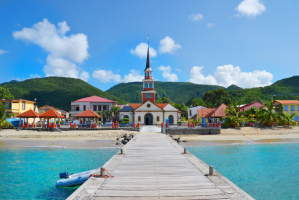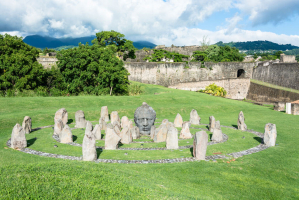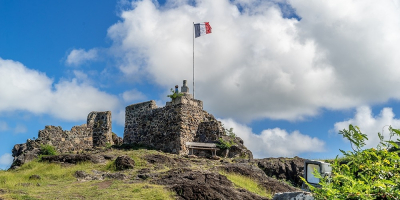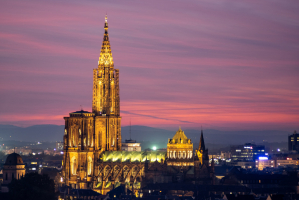Top 5 Most Beautiful Historical Sites in Reunion (France)
Reunion is a little-known jewel that is home to one of the world's most active volcanoes, the snow-capped Piton de Fournaise. Les Cars Jaunes, yellow buses ... read more...that connect the main villages, make it easy to visit this rugged, French-governed island off the coast of East Africa. The vista along the journey into the mountains is breathtaking. For the adventurous and exceptionally fit, bike tours on rugged back roads are a possibility. The untamed town Cirque de Mafate, located beyond the reach of automobiles, reveals the island's wilder side. Here is a list of top 5 most beautiful historical sites to see in Reunion (France) this summer.
-
Known as one of the most beautiful historical sites in Reunion, Maison Folio is a remarkable example of 19th-century Creole architecture, located in the heart of a historic health resort. This colonial villa, which has been a designated historical monument since 1989, was in disrepair before Mr. and Mrs. Folio purchased it and repaired it. The mansion, the three outhouses in the back, and the surrounding gardens are all included in a guided tour. The Napoleon III-style fountain and the intricately carved wooden pavilion adjacent to it are not to be missed. The house was most likely once owned by the head of the community hospital.
Maison Folio, meticulously kept and marvelously preserved, is the epitome of colonial grace and charm. The house's interior is mostly equipped with period furniture and has architectural features of bourgeois Creole cottages such as a veranda, room symmetry, Creole ceiling, floor, and lambrequin.
With its guétali, fountain, and stone walks, the garden represents the "Creole art of living." Plants take up every inch of space between the paths and paths that crisscross the landscape. While strolling there, you will be sent on a voyage of exotic scents among perfume, aromatic, and medicinal plants, such as geranium, vetiver, patchouli, turmeric, lemongrass, and allspice, among others. A highly fascinating exhibition of common period antiques and local crafts is also housed in one of the barns.
Location: Salazie, Reunion
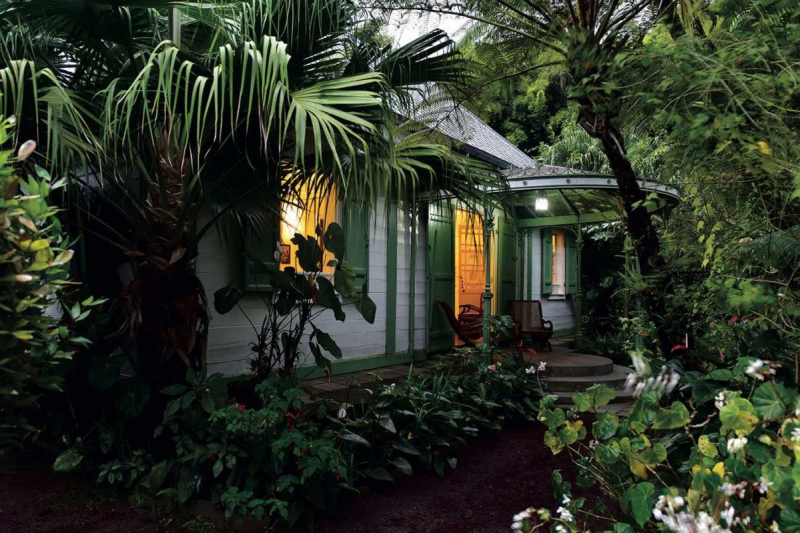
Photo: https://www.cartedelareunion.fr/ 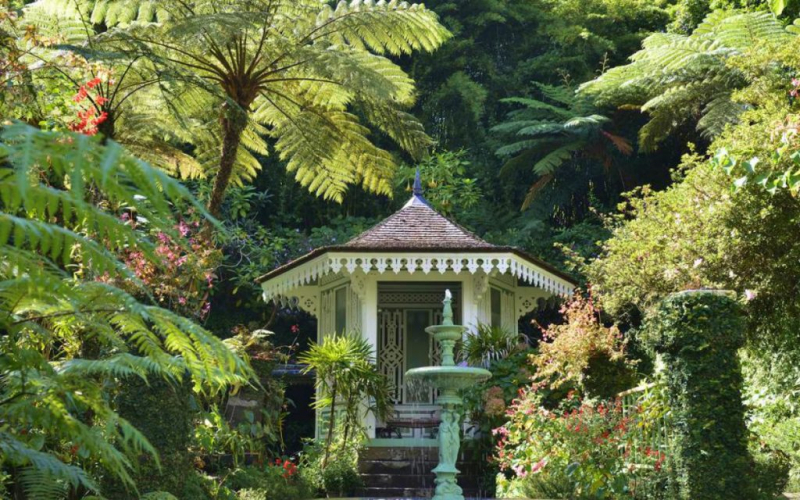
Photo: https://ile-de-la-reunion.net/ -
The interior of Notre-Dame des Laves is notable for one unique feature: a hardened lava flow. Except for a thin trickle of lava that reached 3 m (10 ft) deep into the nave's interior, this modest Catholic church escaped the 1977 volcanic explosion intact. Guy Lefevre, a Madagascar-born artist, designed the massive front stained glass windows depicting the eruption. Since 2000, a statue of the "woman with a parasol" has stood in the church's courtyard, rumored to have magical powers to protect the island from volcanic eruptions.
The name of the church, which means "Our Lady of the Lava," and a collection of stained glass windows representing the eruption serves as a constant reminder of the narrow escape. Many volcanic boulders were removed during the post-eruption cleanup but were later reinstalled to recreate the landscape following the 1977 eruption.
The chapel, which is painted in bright colors and sticks out vividly against the sea of black lava, seems like something straight out of Wes Anderson's mind. The Piton de la Fournaise volcano continues to erupt (it's still active as I write this), but wherever the lava flows, the photogenic wonder of Notre Dame des Laves will take some beating.
Location: Sainte-Rose, Reunion
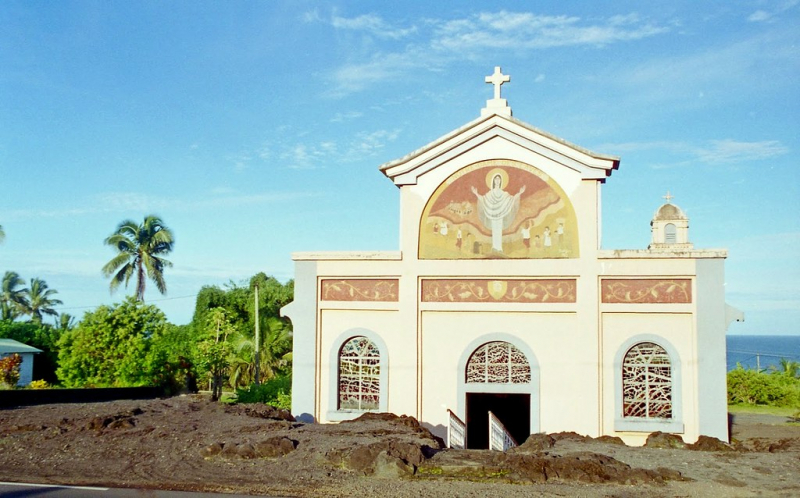
Photo: https://www.flickr.com/ 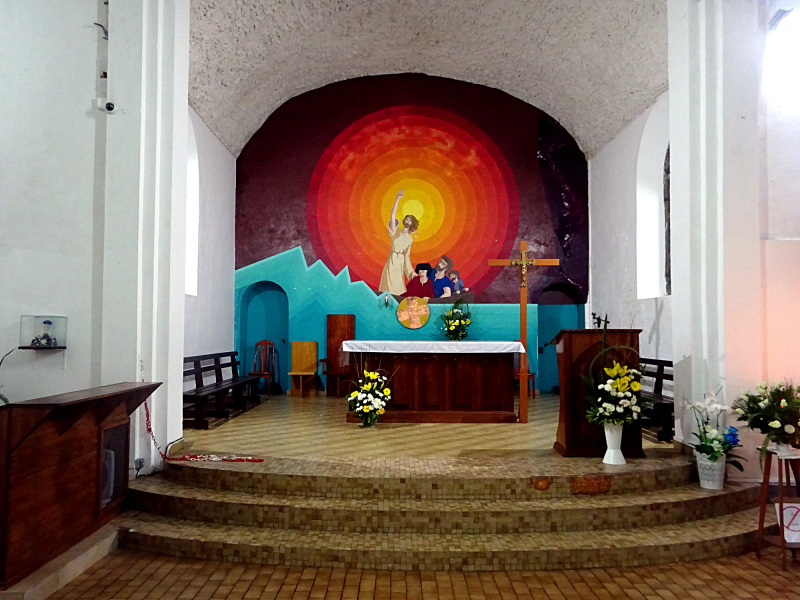
Photo: https://albumphotosvoyages.fr/ -
Cimetière Paysager de Hell-Bourg, one of the most beautiful historical sites in Reunion, located in the foothills of the Alps, is a well-kept cemetery with a few noteworthy burials. Visitors come for the tranquil ambiance and to see the flowers that adorn many of the gravestones and have practically taken over the cemetery. Visitors must zig-zag their way through the region because there is no clear path. Auguste Lacaussade, a Hell-Bourg poet, and the infamous Volcenay Zitte, a bandit who plagued the cities of St. Paul and St. Denis, are both buried here.
Hell-Bourg is a small village in the Salazie commune (administrative division) of the French overseas department of Reunion. It is the main community in the island's Cirque de Salazie and is named for the respected former admiral and island governor Anne Chrétien Louis de Hell. Previously the village had been named Bémaho.
Because Hell-Bourg is such a gorgeous little town, it's only fair that the cemetery is as well. The vista is worthy of its name; it is spectacular. However, your gaze will most likely be drawn to the flowers, which give the area a brilliant, colorful appearance. It's near the main street and well worth the detour.
Location: Salazie, Reunion
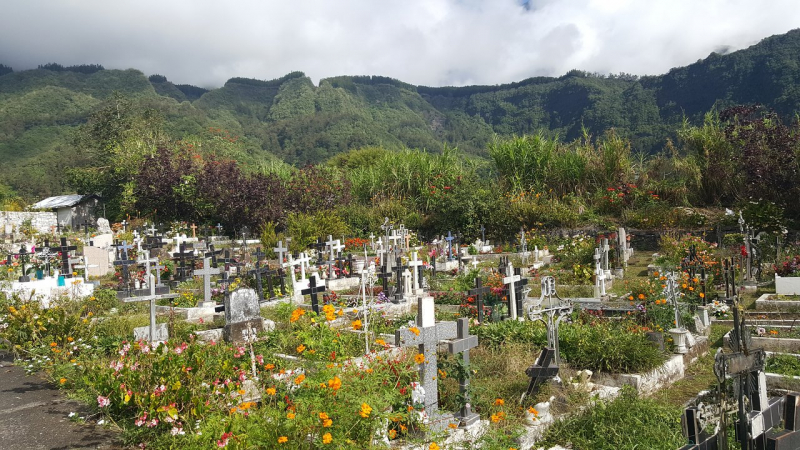
Photo: https://www.tripadvisor.com/ 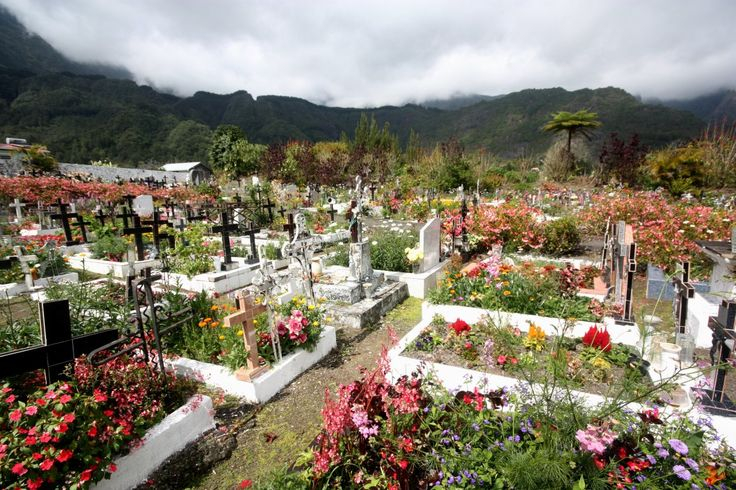
Photo: https://www.pinterest.fr/ -
Casimir Coursolles, a Montréal architect, designed the church in 1855, based on Notre-Dame de Montréal. Its ribbed vaulting, rose windows, and two bell towers, all of which are characteristics of the Gothic style, give it the grandeur of great cathedrals.
During the reign of Queen Melisende, the current Church of St Anne was built between 1131 and 1138. It was built on the site of a grotto thought by the Crusaders to be the childhood residence of the Virgin Mary, mother of Jesus, near the ruins of the Byzantine basilica. It is dedicated to Anne and Joachim, Saint Mary's parents, who lived here according to legend.
The church, which was built between 1131 and 1138 to replace a prior Byzantine church and was later enlarged by several meters, is a fine example of Romanesque architecture. Cross-vaulted ceilings and pillars, crisp straight lines, and an unadorned interior characterize the three-aisled basilica. Arcades of arches separate the nave from the lower lateral aisles.
The high altar, created by French sculptor Philippe Kaeppelin, features a variety of scenes. The Nativity (left), the Descent from the Cross (middle), and the Annunciation (right) are shown on the front of the altar; on the left-hand end is Mary's mother's teaching, and on the right-hand end is her presentation in the Temple. A flight of steps leads down from the south aisle to the crypt, which is located in a grotto thought by the Crusaders to be Mary's birthplace. There is a Mary-dedicated altar there. The Byzantine basilica was partially built over two water basins known as the Pools of Bethesda and was supported by several piers, one of which still survives in its entirety today.Location: Salazie, Reunion
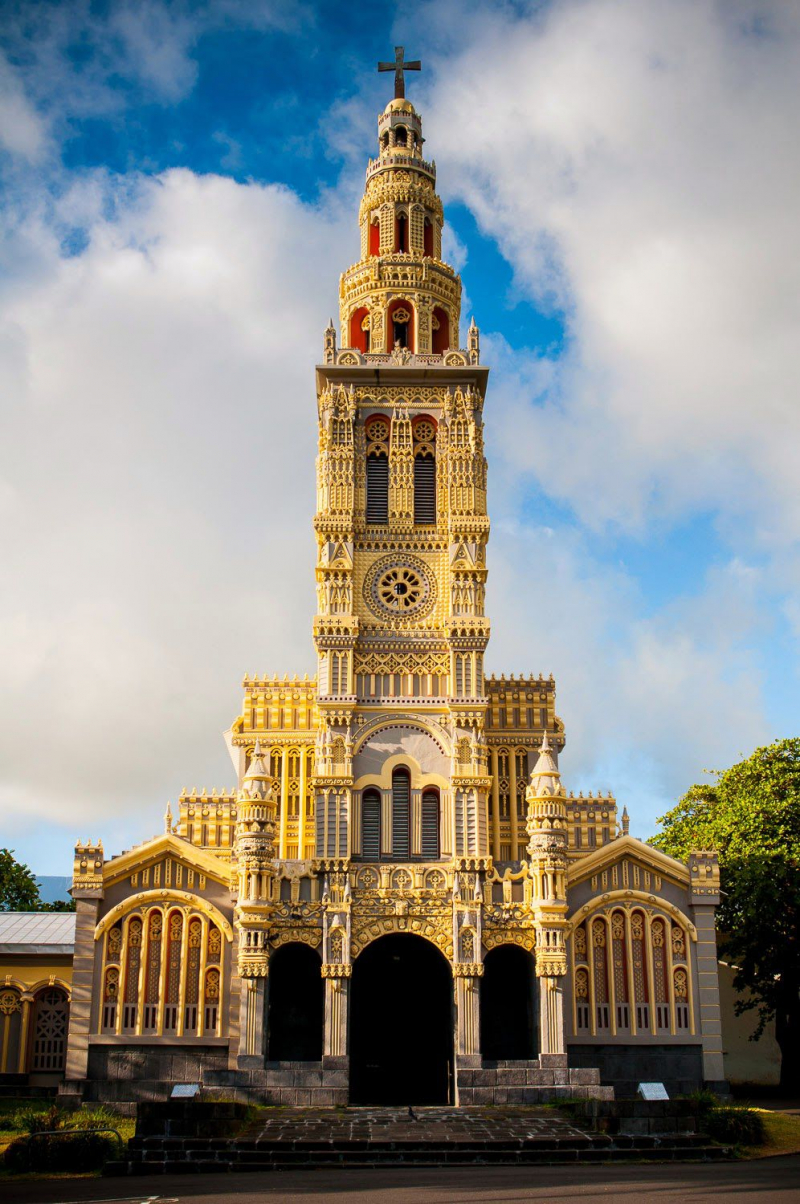
Photo: https://ar.pinterest.com/ 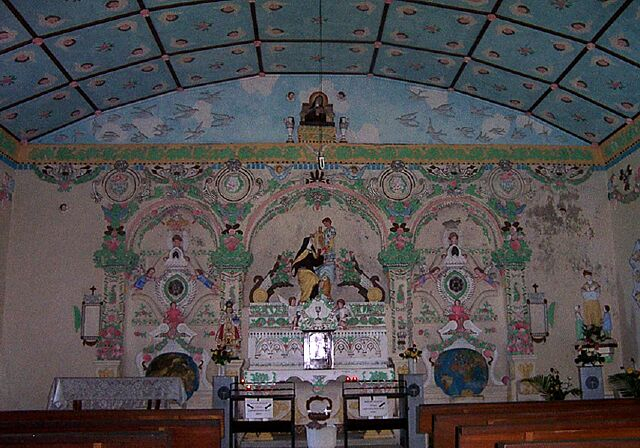
Photo: https://www.mi-aime-a-ou.com/ -
Temple Tamoul Narassingua Perournal is the last beautiful historical site in Reunion in this list.The temple was erected by Indian laborers in the 1800s and rebuilt by artists from the south of India between 1997 and 2010. This temple attracts a lot of attention from both locals and visitors from other parts of the world.
The Narasinga Perournal Temple came in third place in the competition for the French's top 14 monuments for 2020. Between September and October each year, people flock to the shrine to pay their respects to the God Narashima. The God Narashima, an avatar of the Hindu God Vishnu, is honored at the Narassingua Perournal Temple in Saint-Ravine Pierre's Blanche neighborhood.
Temple Tamoul Narassingua Perournal is a spiritual haven for the local Tamil populace, tucked away from the hectic city streets. The temple, which is generally off-limits to tourists and hidden from the public view, unveils a world of extraordinary architecture, religious prescripts, and local culture. Take a stroll through the well-kept garden, which matches the structure's ornately adorned walls. Consider hiring a local guide to gain a better knowledge of the Tamil religious activities done in the temple. Make Temple Tamoul Narassingua Perournal a highlight of your trip to Saint-Pierre.
Location: Saint-Pierre, Reunion
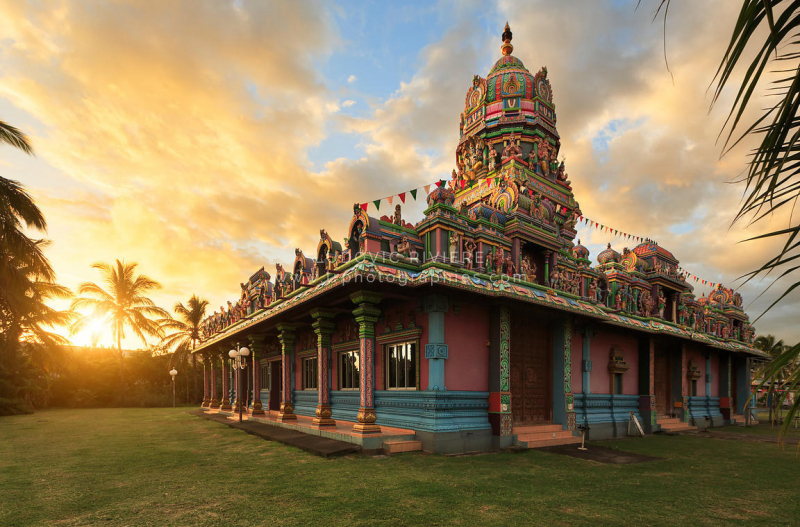
Photo: https://visit.today/ 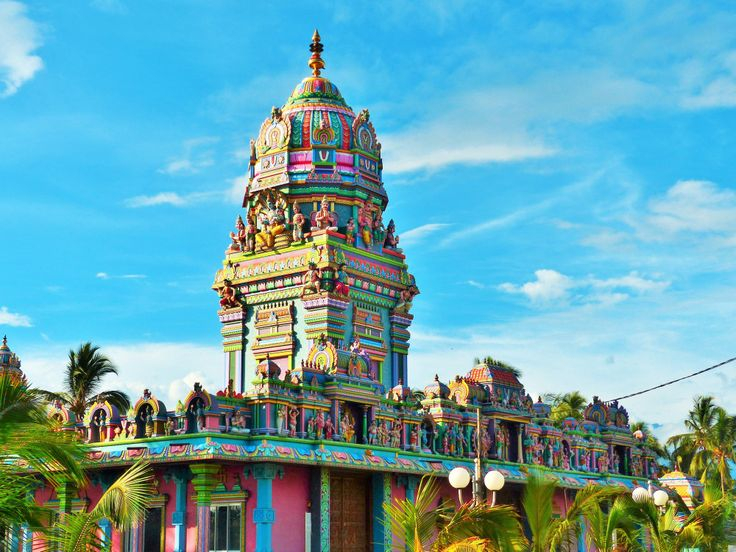
Photo: https://www.pinterest.co.uk/







